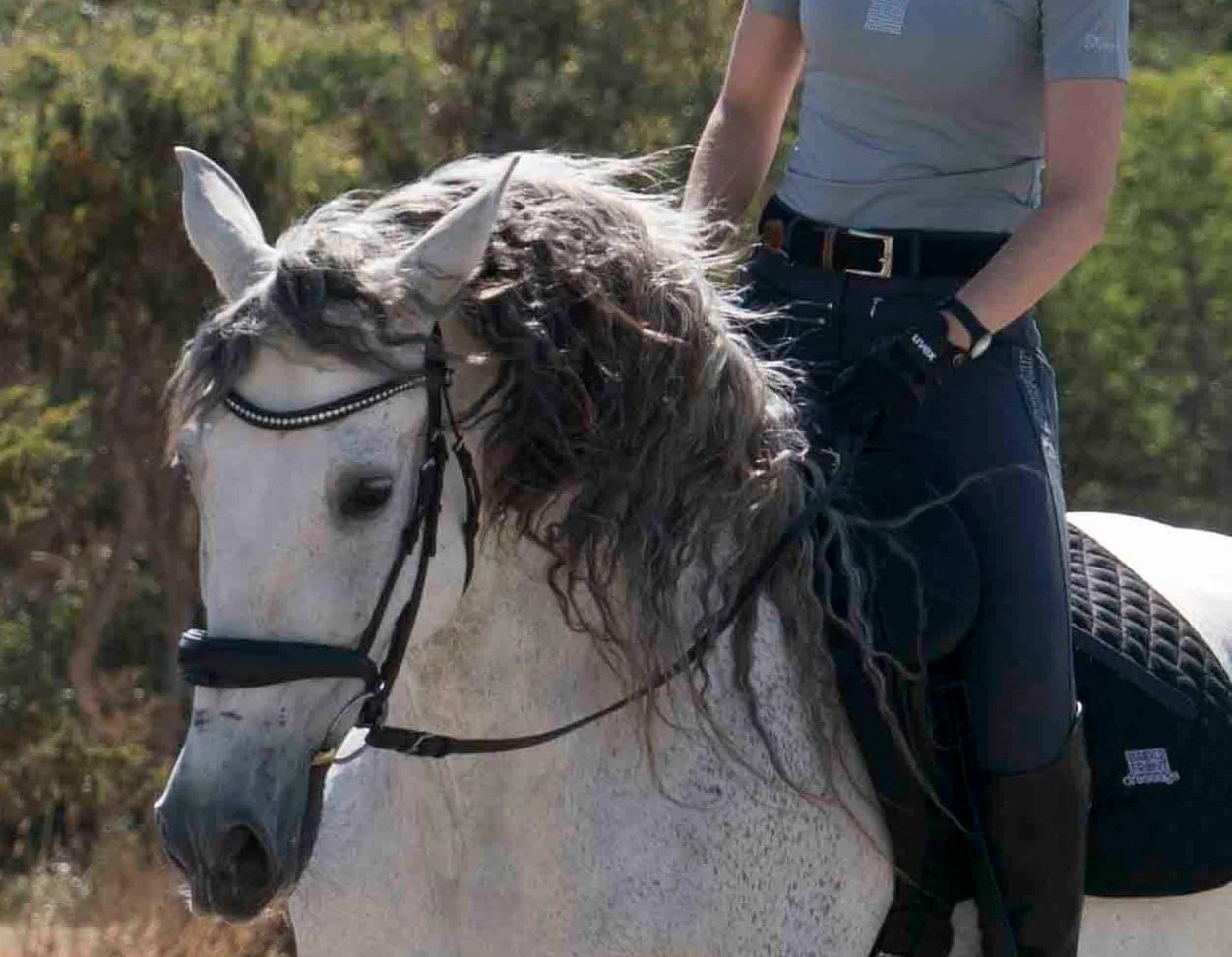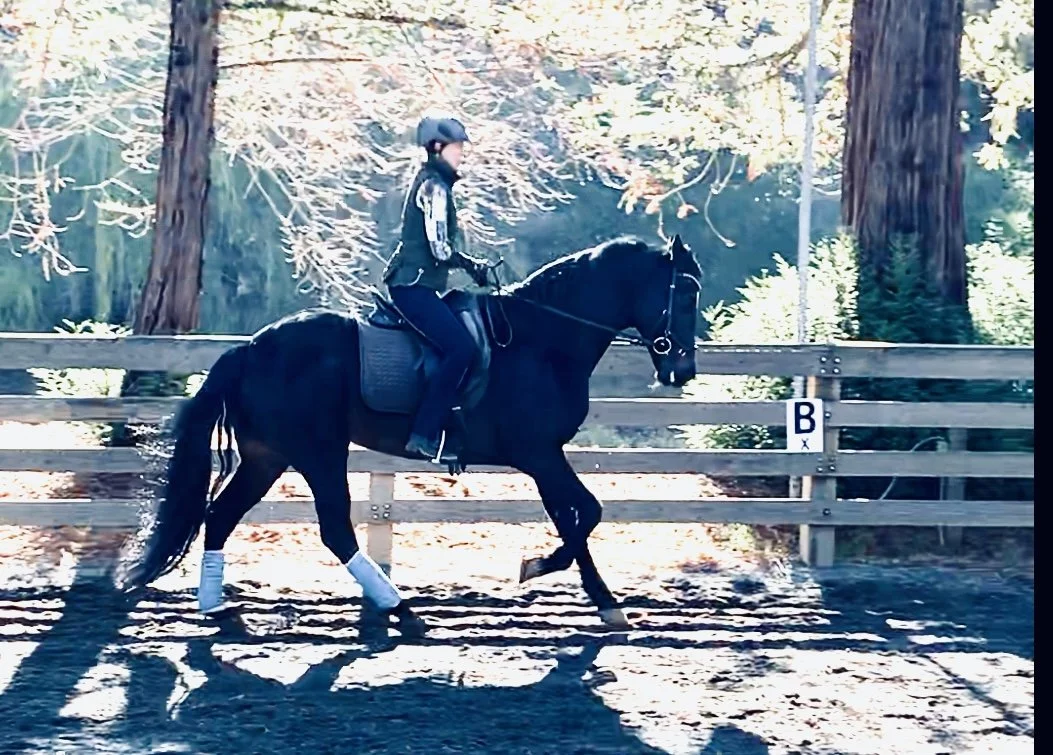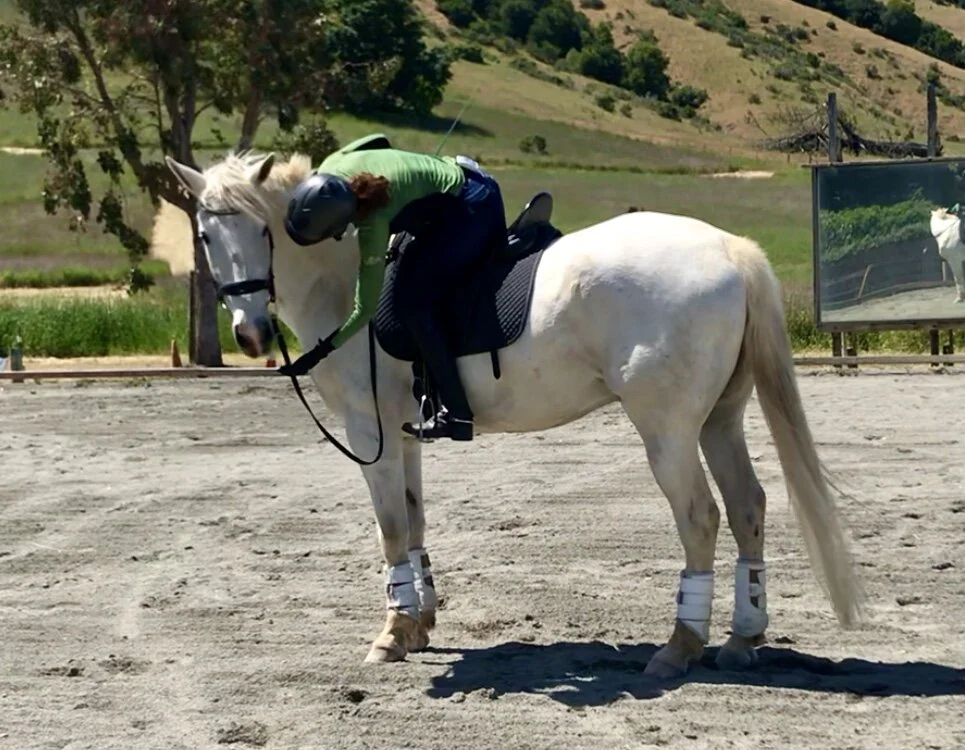A Horse's Mind is a Terrible Thing to Waste
I happen to work with a lot of horses who have little training or little good (dressage) training. I also get to sit on a fair number of different horses and there is one thing that still strikes me as odd: a lot of them seem disengaged, either actively opting to do their own program or putting in a minimum of energy with an eye on their breakfast or lunch. If your horse walks away from you when you come to get him, there’s a problem. And the horse’s isn’t it.
Just recently I rode a super talented dressage horse who tends to be spooky to the point that his owner dreads taking him to a show. The vet has ruled out any physical issues and they’ve tried all sorts of “natural remedies” to help calm his nerves. When I sat on him I immediately noticed that he wasn’t with me. The spooking is just the tip of the iceberg. At his age and level of training, he should easily be able to perform a trot-canter-trot transition with a change of rein on a large figure eight. He couldn’t. He also couldn’t stretch with the nose in front of the vertical at the trot or the canter. He wasn’t a millimeter between leg and hand, he was roughly two feet between leg and hand. He wasn’t used to keeping himself organized b/c his riders were strong and competent in doing that for him. Now mind you, he looked gorgeous when presented by his owner and when he’s not spooking, but it’s fake. It’s not sustainable, the card house built on top of the missing ingredient relaxation only stands up as long as there’s no breeze.
What would I do in this case? Ask him to slow down. He’s used to flying around a medium trot. Ask him to be in more self-carriage. Lots of beginning shoulder in, leg yields, anything to keep his back as engaged as his brain. Lots of stretching with the nose out front. Varying exercises with lots of changes of rein so he has to pay attention to his rider, challenging, but set up in a way that fosters his balance, not undermines it. Tons of praise. Lots of breaks on a long rein. Lots of love and chilling out. And this done consistently, without time pressure leads to success.
The horse has to learn to take responsibility for his balance (the rider of course has to do everything possible to enable it) and that is as much of a physical task as a mental one. There’s nothing more beautiful to me than the calm and focused expression of a horse who’s concentrating on his work. And this is also the process in which the horse learns that he has agency in his own life, that there’s a skillful way of doing things that feels good and that get him more of the things he likes (balance, exercise, endorphins, praise, love, time with his human…). Horses are literally proud of their accomplishments when we engage their minds.
I honestly have never had a horse in training who didn’t quickly learn to enjoy his work. Of course the kind of work has to be tailored to each horse’s abilities and personality (and obviously the horse has to be healthy), but basic dressage training is not rocket science for a horse; it’s fundamental life skills for any ridden horse.
Photo: PRE Pinsapo, poster child for the calm and focused look





